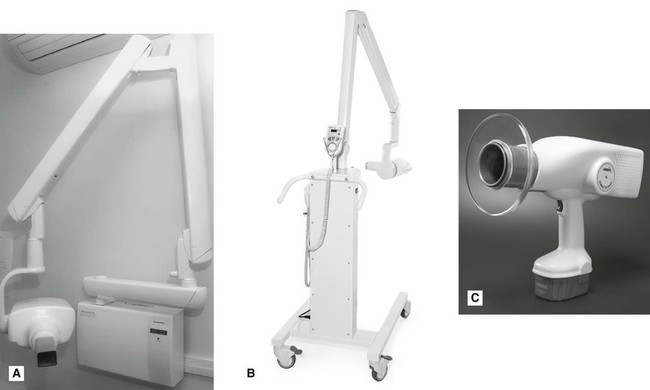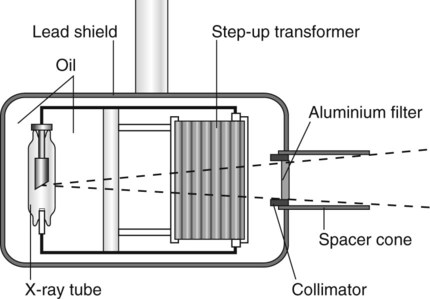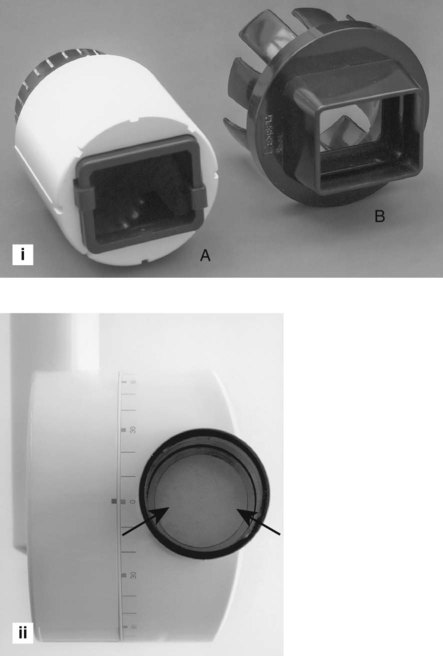Dental X-ray generating equipment
These dental units can either be fixed (wall, floor or ceiling mounted) or mobile (attached to a sturdy frame on wheels) as shown in Figs 3.1A and B. A recent development has been the production of hand-held dental units, as shown in Fig. 3.1C, particularly useful for domiciliary and forensic radiology.
Main components of the tubehead
A diagram of a typical tubehead is shown in Fig. 3.2. The main components include:
• The glass X-ray tube, including the filament, copper block and the target (see Ch. 2)
• The step-up transformer required to step-up the mains voltage of 240 volts to the high voltage (kV) required across the X-ray tube
• The step-down transformer required to step-down the mains voltage of 240 volts to the low voltage current required to heat the filament
• A surrounding lead shield to minimize leakage
• Surrounding oil to facilitate heat removal
• Aluminium filtration to remove harmful low-energy (soft) X-rays (see Fig. 3.3)
• The collimator – a metal disc or cylinder with central aperture designed to shape and limit the beam size to a rectangle (the same size as intraoral film) or round with a maximum diameter of 6 cm (see Figs 3.3 and 3.4)
Stay updated, free dental videos. Join our Telegram channel

VIDEdental - Online dental courses





